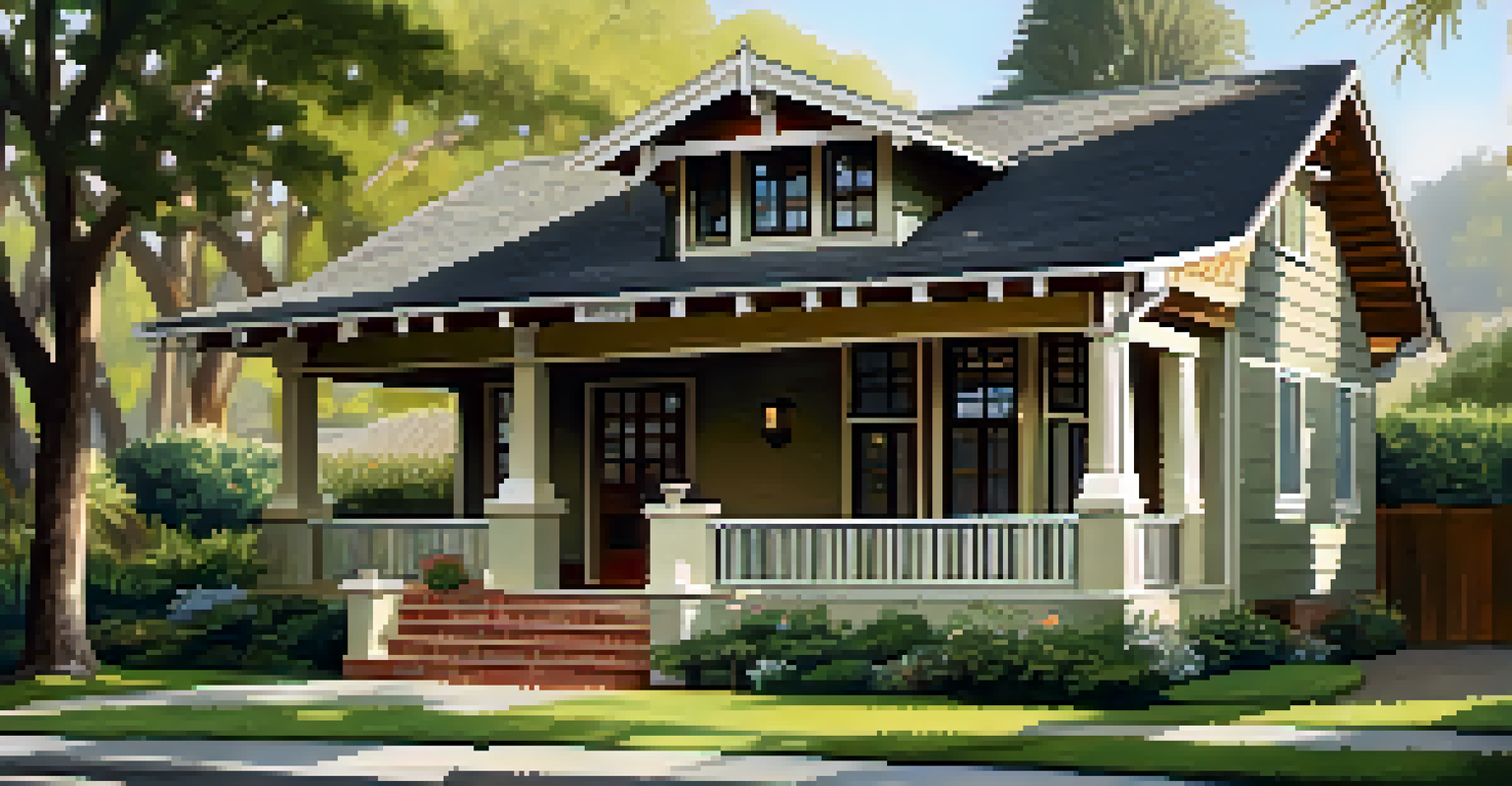Exploring the Architectural Gems of California's Historic Districts

The Charm of California's Historic Districts
California is a state rich with history, and its historic districts are a testament to that vibrant past. These neighborhoods are not just places to live; they are living museums, showcasing architectural styles from Spanish colonial to modernist designs. A stroll through these districts feels like stepping back in time, allowing you to experience the state's evolution firsthand.
Architecture is the art of how to waste space.
Each district tells its own story, reflecting the cultural influences that shaped California. For instance, the Mission District in San Francisco boasts beautiful Victorian homes, while Old Town San Diego offers a glimpse into California’s early days with its adobe buildings. This variety makes exploring these areas a fascinating journey through time and style.
Visiting these districts isn't just about admiring buildings; it's about connecting with the history of the state. You can imagine the lives of those who walked the same streets, making the experience both educational and enjoyable.
Spanish Colonial Revival: A Unique Architectural Style
One of the most iconic architectural styles in California is the Spanish Colonial Revival, which emerged in the early 20th century. Characterized by stucco walls, red-tiled roofs, and arched doorways, this style reflects the state's colonial past. You can see these elements beautifully showcased in places like Santa Barbara, where the architecture blends seamlessly with the coastal landscape.

These buildings often incorporate intricate tile work and wrought iron details, adding a touch of elegance to the structure. The design principles of this style emphasize harmony with nature, making it a favorite among residents and visitors alike. Walking through a Spanish Colonial neighborhood feels like a mini-vacation to a Mediterranean paradise.
California's Rich Architectural Heritage
California's historic districts serve as living museums, showcasing diverse architectural styles and cultural influences.
Exploring these areas provides insight into California's cultural heritage and the influence of early Spanish settlers. The Spanish Colonial Revival style remains a beloved choice for new constructions, ensuring that this architectural gem continues to thrive.
Victorian Elegance in San Francisco
San Francisco is renowned for its Victorian architecture, particularly the stunning row of Painted Ladies. These brightly colored homes, with their ornate details and intricate woodwork, offer a striking contrast to the city's modern skyline. A visit to Alamo Square Park, where these homes are prominently featured, is a must for any architecture enthusiast.
A building is not just a place to be but a way to be.
Victorian homes often reflect the wealth and status of the families who lived in them during the late 19th century. Each house tells a story through its unique architectural features, such as bay windows and elaborate gables. It's fascinating to consider how these homes have been preserved and maintained over the years.
Strolling through San Francisco’s Victorian neighborhoods allows you to appreciate not just the beauty of the architecture, but also the resilience of the community. The city has worked diligently to protect these historical treasures, ensuring they remain a vital part of its identity.
The Craftsman Movement and Its Legacy
The Craftsman architectural style, which gained popularity in the early 20th century, emphasizes handcrafted details and natural materials. This style is particularly prominent in areas like Pasadena, where bungalows with wide porches and exposed beams showcase the warmth and simplicity of Craftsman design. These homes invite you to sit back, relax, and enjoy the beauty of craftsmanship.
Craftsman homes often feature built-in furniture, large fireplaces, and extensive woodwork, creating a cozy atmosphere. This architectural movement was a reaction against the ornate styles of the past, promoting a more organic and straightforward approach to home design. It resonates with those who appreciate authenticity and a connection to nature.
Preservation of Historic Districts
Preservation efforts are vital for maintaining the charm of California's historic neighborhoods amidst urban development.
Exploring Craftsman neighborhoods provides a sense of community and a glimpse into the values of the early 20th century. These homes are not just structures; they represent a way of life that prioritizes quality and craftsmanship, making them timeless treasures.
Modernism: The Bold New Wave in Architecture
California has long been a hub for modernist architecture, especially in cities like Los Angeles. Characterized by clean lines, open spaces, and a focus on function, modernist buildings challenge traditional design norms. The Getty Center is a striking example, blending art and architecture seamlessly against the backdrop of the Santa Monica Mountains.
Modernism emphasizes the use of new materials and technologies, which allows architects to create innovative and often striking designs. This style encourages experimentation, leading to buildings that can be both functional and artistic. As you explore modernist districts, you’ll find structures that push the boundaries of what architecture can achieve.
Understanding modernism within California's context reveals the state's role as a pioneer in architectural innovation. This movement continues to influence new generations of architects, ensuring that California remains at the forefront of design trends.
Preservation Efforts: Keeping History Alive
As California's historic districts face challenges from urban development, preservation efforts play a crucial role in maintaining their charm and character. Organizations like the National Trust for Historic Preservation work tirelessly to advocate for these valuable neighborhoods, ensuring they are respected and preserved. Community involvement is key, as residents often lead the charge in protecting their local heritage.
Cities like San Diego and San Francisco have enacted policies to safeguard their historic buildings, balancing growth with the need to maintain their unique architectural landscapes. These initiatives often involve extensive research and community input to ensure that any changes made respect the historical context of the area. It’s a collaborative effort that showcases the importance of community in preserving local history.
Discovering Hidden Architectural Gems
Exploring lesser-known districts reveals unique insights into California's diverse architectural landscape and rich history.
These preservation efforts not only protect the architectural gems of California but also serve as a reminder of the stories and cultures that shaped the state. By visiting these districts, you support their preservation, contributing to a collective memory that enriches future generations.
Exploring the Hidden Gems: Off the Beaten Path
While famous districts like the Mission District or the Victorian Row in San Francisco draw plenty of tourists, California is home to many lesser-known architectural treasures. Places like the historic town of Nevada City or the quirky architecture of Los Alamos offer unique insights into the state's diverse architectural landscape. These hidden gems can provide a more intimate experience, away from the crowds.
Exploring these off-the-beaten-path locations allows you to discover the rich tapestry of California's history. Each town has its own unique story, often reflected in the architecture. For instance, Nevada City boasts a mix of Victorian and Gold Rush-era buildings, offering a glimpse into the past that feels both authentic and captivating.

Venturing beyond the popular sites also supports local economies, encouraging the preservation of these unique districts. Plus, you never know what you might find—a charming café in a historic building or a local art gallery brimming with creativity. These experiences enrich your understanding of California’s architectural heritage.